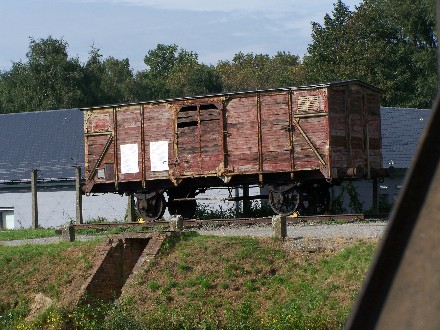
Breendonk - A Nazi Concentration Camp

Breendonk. A sobering day for all of us. Breendonk.
Here was a day like no other for us - the most
sobering experience of our lives. Our visit to Breendonk was like nothing
we had ever done
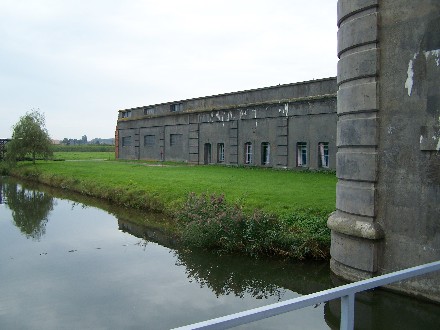 before.
We recommend seeing something like this to everyone, but come prepared, in both
your mind and in your heart. You will not be the same when you leave...
And you have only been a visitor...
before.
We recommend seeing something like this to everyone, but come prepared, in both
your mind and in your heart. You will not be the same when you leave...
And you have only been a visitor...
Many of you know that Amanda has always found the
history of World War II to be fascinating and she has read many books and
documents on the topic for years now. So coming to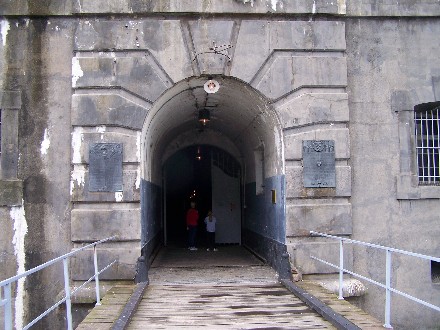 Europe for us means being able to give her first hand experiences with that
history, to give us all a chance to really see it. Today we took the
opportunity to visit Breendonk - the only Nazi Concentration Camp in Belgium.
Originally the building was a fort to protect the city of Antwerp, so it was
strongly built and remains mostly intact, making it one of the best
Europe for us means being able to give her first hand experiences with that
history, to give us all a chance to really see it. Today we took the
opportunity to visit Breendonk - the only Nazi Concentration Camp in Belgium.
Originally the building was a fort to protect the city of Antwerp, so it was
strongly built and remains mostly intact, making it one of the best
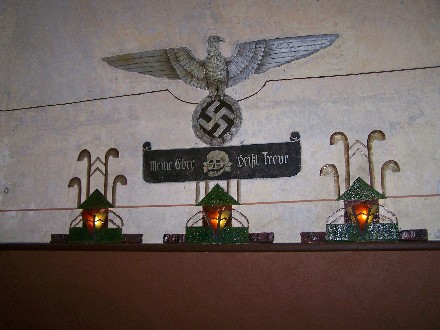 preserved
camps in all of Europe. It has been preserved and renovated in order to
give the "utmost respect for the historical truth" as is possible. When
you enter you receive an audio device with a keypad - each display has a number
on it and you enter that number into your device and you hear the story of that
room or person or event, sometimes in the voice of a survivor of that room or
event while you stand there looking at his or her picture or watching him or her
on video. The devices can be programmed for many languages, so while we
heard the survivors tell their stories and could hear their voices in the
background, we were hearing a translation into English.
preserved
camps in all of Europe. It has been preserved and renovated in order to
give the "utmost respect for the historical truth" as is possible. When
you enter you receive an audio device with a keypad - each display has a number
on it and you enter that number into your device and you hear the story of that
room or person or event, sometimes in the voice of a survivor of that room or
event while you stand there looking at his or her picture or watching him or her
on video. The devices can be programmed for many languages, so while we
heard the survivors tell their stories and could hear their voices in the
background, we were hearing a translation into English.
This camp was "home" to both Jewish people and
people involved with the resistance forces. It was open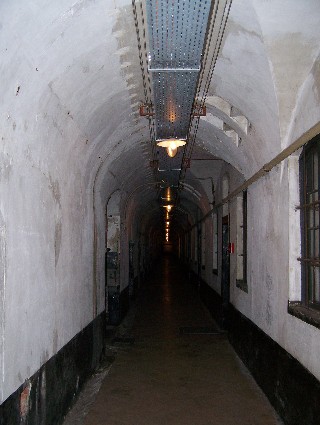 from 1940-1944 and by the end of that time 1 in 8 prisoners were Jewish, the
rest were resistance. Both men and women were housed here. Because
there was such a high number of people involved with the resistance, the
facility houses a torture chamber, which is not always present in the camps.
from 1940-1944 and by the end of that time 1 in 8 prisoners were Jewish, the
rest were resistance. Both men and women were housed here. Because
there was such a high number of people involved with the resistance, the
facility houses a torture chamber, which is not always present in the camps.
As a family, we had talked about what we might see
beforehand, trying to
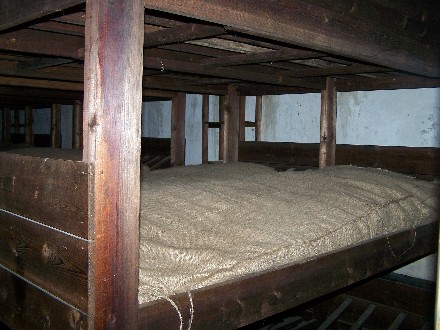 prepare
the kids for the horrors that we would hear about and see. We paid close
attention as we went along to what Casey and Alex were choosing to listen to on
their devices so we could talk to them more about it later. The older
three of us listened to every word in every room. Since our visit we have
spent much time in conversation about what we saw - we are all still coming to
terms with it in our own ways.
prepare
the kids for the horrors that we would hear about and see. We paid close
attention as we went along to what Casey and Alex were choosing to listen to on
their devices so we could talk to them more about it later. The older
three of us listened to every word in every room. Since our visit we have
spent much time in conversation about what we saw - we are all still coming to
terms with it in our own ways.
On this page I have included many pictures.
They do not do the visit justice. Something Amanda said a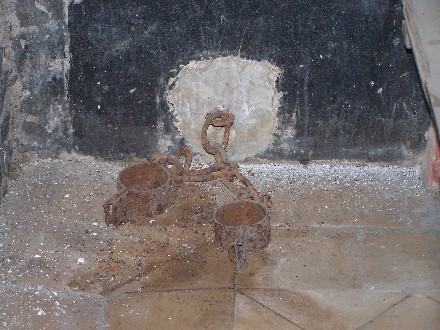 few days after our visit really rings true - You know how in some museums they
put everything out there for you to touch and it's all hands on and in other
museums they don't want you to touch anything. Well, here they didn't tell
us to touch or not touch and it was all right there were you could touch it, but
you didn't want to... You really didn't want to...
few days after our visit really rings true - You know how in some museums they
put everything out there for you to touch and it's all hands on and in other
museums they don't want you to touch anything. Well, here they didn't tell
us to touch or not touch and it was all right there were you could touch it, but
you didn't want to... You really didn't want to...
Sonya brought up that you may have read a book or
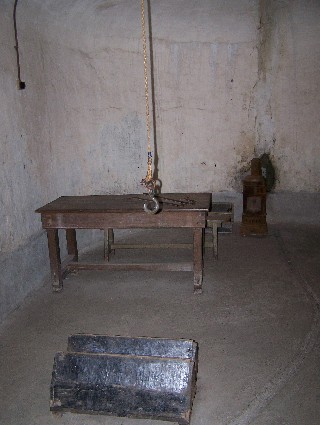 watched
a documentary, but until you stand in a room and watch a survivor tell what
happened to him right there in that very spot, seeing his eyes and watching his
gestures while he describes the place where you stand and the guards you have
seen and had described to you in previous rooms. It is a completely
different experience and gives you an entirely new perspective... It
changes you, it really does, and like I said before, we were just visitors here.
watched
a documentary, but until you stand in a room and watch a survivor tell what
happened to him right there in that very spot, seeing his eyes and watching his
gestures while he describes the place where you stand and the guards you have
seen and had described to you in previous rooms. It is a completely
different experience and gives you an entirely new perspective... It
changes you, it really does, and like I said before, we were just visitors here.
These pictures can give you an idea of our day.
You see the train car that brought the prisoners here, packed in as tightly as
possible. You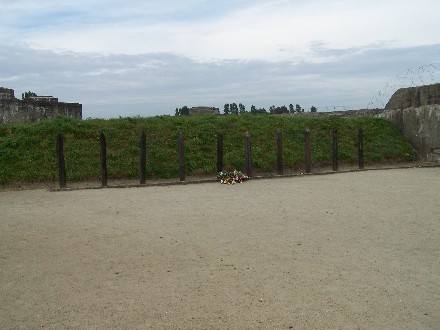 see the moat that surrounds the area - the water was used in many punishments,
throwing a prisoner in it in the middle of winter when he wasn't doing what s/he
was told and so on. You see the entrance to the fort. You see the
justice room with it's symbols of the 3rd Reich - you came here first for your
"trial" and then went to the induction building when you were found guilty.
You see the hallway you walked through daily. You see the bunk beds where
you slept on insect infested, straw filled mattresses - the bunks hold 6 people
and most cells had 8-10 bunks with a chamber pot and a couple of
see the moat that surrounds the area - the water was used in many punishments,
throwing a prisoner in it in the middle of winter when he wasn't doing what s/he
was told and so on. You see the entrance to the fort. You see the
justice room with it's symbols of the 3rd Reich - you came here first for your
"trial" and then went to the induction building when you were found guilty.
You see the hallway you walked through daily. You see the bunk beds where
you slept on insect infested, straw filled mattresses - the bunks hold 6 people
and most cells had 8-10 bunks with a chamber pot and a couple of
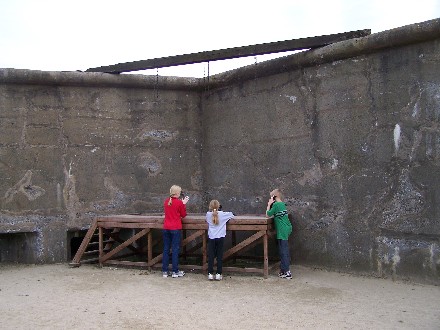 small
table where they all could eat the meager portions they were given. You
see the shackles on the inside of a confinement chamber - when they brought you
out of here for any reason your head was covered with a blue bag to prevent you
from seeing anything as they lead you away. You see the torture chamber,
with it's hook coming down that you were hung up on, the tools on the table, the
fire to heat them up, the electrical source on the wall, the cut into the floor
that leads to a drain for them to clean up... You see the execution area
with 10 posts that the prisoners were tied to and the gallows with space enough
for three... You don't see the toilet area, where you were sent in in
groups and given one minute. You don't see the communal shower area.
You don't see the roll call area, where at the end of the day you had to file
past the bodies of those who had died that day for whatever reason... You
don't see a lot of it... We will never be the same for what we have seen
of it...
small
table where they all could eat the meager portions they were given. You
see the shackles on the inside of a confinement chamber - when they brought you
out of here for any reason your head was covered with a blue bag to prevent you
from seeing anything as they lead you away. You see the torture chamber,
with it's hook coming down that you were hung up on, the tools on the table, the
fire to heat them up, the electrical source on the wall, the cut into the floor
that leads to a drain for them to clean up... You see the execution area
with 10 posts that the prisoners were tied to and the gallows with space enough
for three... You don't see the toilet area, where you were sent in in
groups and given one minute. You don't see the communal shower area.
You don't see the roll call area, where at the end of the day you had to file
past the bodies of those who had died that day for whatever reason... You
don't see a lot of it... We will never be the same for what we have seen
of it...